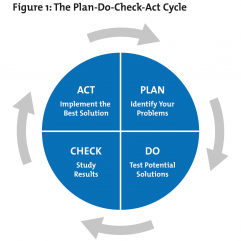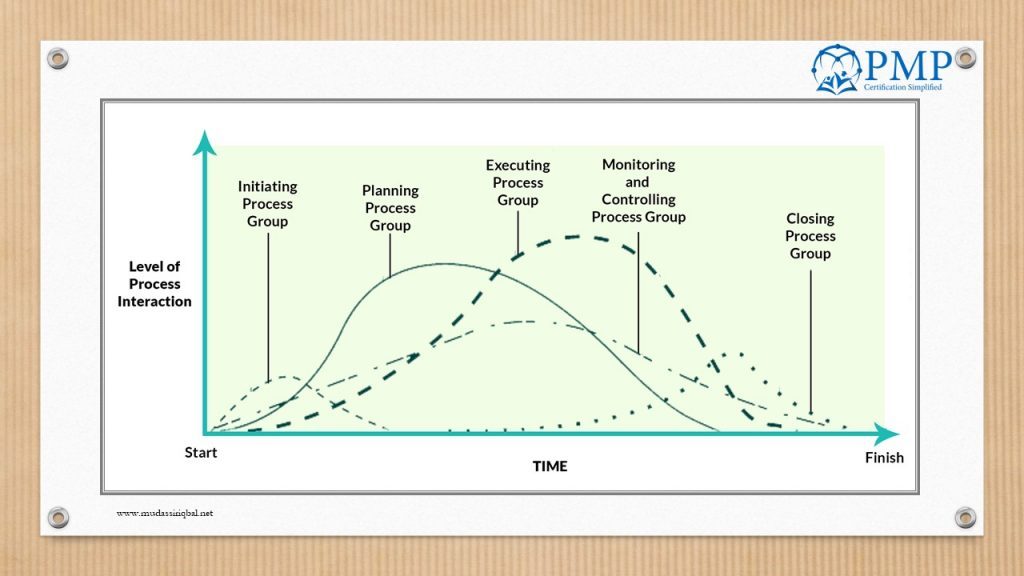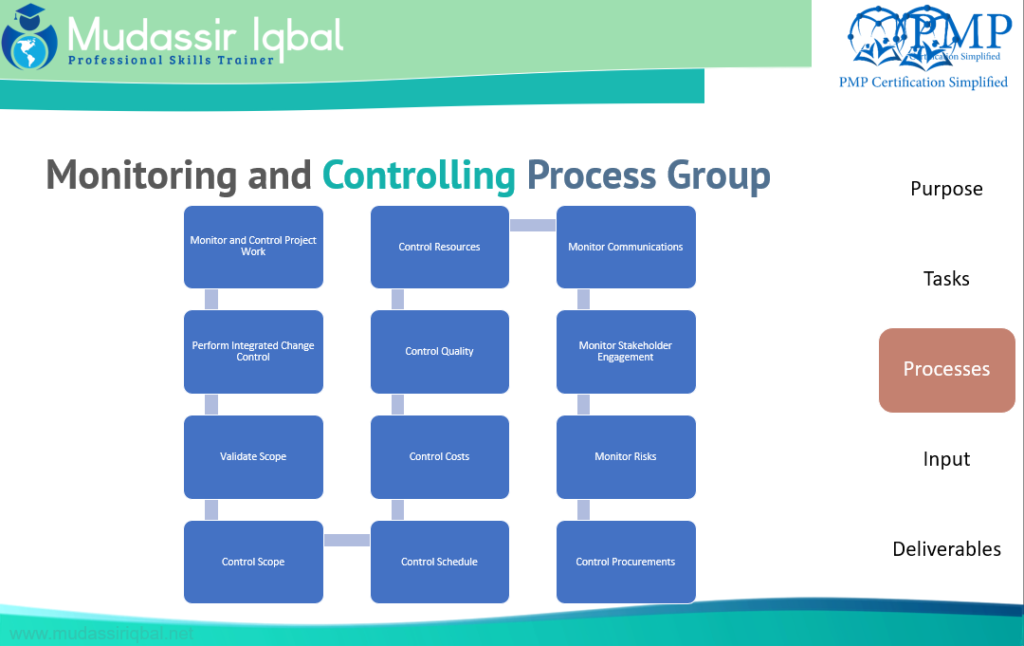The Monitoring and Controlling Process Group consists of those processes required to track, review, and regulate the progress and performance of the project; identify any areas in which changes to the plan are required; and initiate the corresponding changes. PMBOK 6
How do you know the current status of your project? How is the current status of the project communicated to your organization’s management team? How do you ensure your clients know the project’s status? When do you introduce change or corrective action into the project based on the project’s current status? When do you decide to allow the project to continue “as is” with no changes being introduced?
The answers to these question stem from the Monitoring and Controlling Process Group.*

Changes are inevitable. No execution ever goes a hundred per cent as planned. Monitoring and controlling process help remain proactive to look for potential problems. The early identification will help the team to take appropriate corrective action. Continuous monitoring and control will ensure that the planning was done satisfactorily, and nothing is left out. These processes make sure that if the projects are not going according to plan, they are brought back on track.
This process usually starts with the initiation or early planning and ends once the project has achieved its goals and objectives likey as the post-implementation review. It helps the PM in keeping the project on track, on time and within budget.
Check-Act of PDCA is covered through Monitoring and Closing. These process groups interact with all other Process groups
The activities in Monitoring and controlling Process Group check if there are deviations from the expected results of the project.

As seen in the above image, the Monitoring & Controlling process group is the only process group that interacts with all other project management process groups.
The major inputs here are the project plan and progress reports that contain data collected from the project team during the execution process. This will help the Project Manager and Project management compare the actual performance against the plan and if the variances are outside the acceptable tolerance, corrective actions are taken to get the project back on track. While getting the project process back on track, do look for root causes to avoid the same challenges again.
The objective here is to keep the ball rolling with minimal risk. The continuous monitoring helps the project team with insight into the project’s health, which would help them identify areas requiring additional attention. In addition this also monitors and controls the entire project effort.
Purpose of Monitoring and Controlling Process Group
- Controlling changes and recommending corrective or preventive action
- Monitoring activities against the plan
- Influencing the factors that could circumvent integrated change control or configuration management so only approved changes are implemented
Tasks in Monitoring and Controlling Process Group

- Measure project performance
- Verify and manage changes to the project
- Ensure project deliverables conform to quality standards
- Monitor all risks
- Maintain Issue Log
- Maintain Project Knowledge Repository
- Monitor Procurement Activities
This phase is all about measuring project development and performance to make sure everything aligns with the project management plan. Project manager uses key performance indicators (KPIs) to figure out if the project is on track. A PM usually picks two to five of these performance indicators to measure project performance:
- Project Objectives: Assessing if a project is on schedule and budget to meet the stakeholder objectives.
- Quality Deliverables: It regulates if specific task deliverables are accomplished.
- Effort and Cost Tracking: The Project manager is responsible for the effort and cost of means to determine if the budget is on track. This tracking information helps in understanding whether the project will be finished on the decided date based on current performance
Processes in Monitoring and Controlling Process Group (12 Processes)
- Monitor and Control Project Work ⇒ Project Integration Management
is the process of tracking, reviewing, and reporting the overall progress to meet the performance objectives defined in the project management plan - Perform Integrated Change Control ⇒ Project Integration Management
is the process of reviewing all change requests; approving changes and managing changes to deliverables, organizational process assets, project documents, and the project management plan; and communicating the decisions - Validate Scope ⇒ Project Scope Management
is the process of formalizing acceptance of the completed project deliverables. - Control Scope ⇒ Project Scope Management
is the process of monitoring the status of the project and product scope and managing changes to the scope baseline. - Control Schedule ⇒ Project Schedule Management
is the process of monitoring the status of the project to update the project schedule and manage changes to the schedule baseline - Control Costs ⇒ Project Cost Management
is the process of monitoring the status of the project to update the project costs and managing changes to the cost baseline - Control Quality ⇒ Project Quality Management
is the process of monitoring and recording results of executing the quality management activities to assess performance and ensure the project outputs are complete, correct, and meet customer expectations - Control Resources ⇒ Project Resource Management
is the process of ensuring that the physical resources assigned and allocated to the project are available as planned, as well as monitoring the planned versus actual utilization of resources and taking corrective action as necessary - Monitor Communications ⇒ Project Communication Management
is the process of ensuring the information needs of the project and its stakeholders are met. - Monitor Risks ⇒ Project Risk Management
is the process of monitoring the implementation of agreed-upon risk response plans, tracking identified risks, identifying and analyzing new risks, and evaluating risk process effectiveness throughout the project - Control Procurement ⇒ Project Procurement Management
is the process of managing procurement relationships, monitoring contract performance and making changes and corrections as appropriate, and closing out contracts - Monitor Stakeholder Engagement ⇒ Project Stakeholder Management
is the process of monitoring project stakeholder relationships, and tailoring strategies for engaging stakeholders through modification of engagement strategies and plan.

EVM
Earned Value management is the tool of choice for this process group. Using this Project manager will calculate the variances in Schedule and Cost using all three constraints i.e Scope, Cost and Schedule.

Key Deliverables
•Performance Information
•Change Requests
•Forecasts


3 thoughts to “Monitoring and Controlling Process Group – PMP/CAPM”
EVM lets you paint an actual picture of ‘where a project is’ and ‘how long the journey ahead is’. This accuracy helps spot discrepancies, change plans, correct mistakes and ultimately make quality, time-conscious delivery possible.
Pingback: What is key purpose of the monitoring and controlling process group? - Question And Answer Club
Pingback: Change Request - Mudassir Iqbal